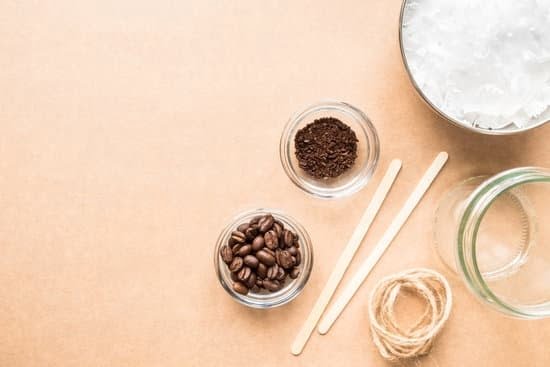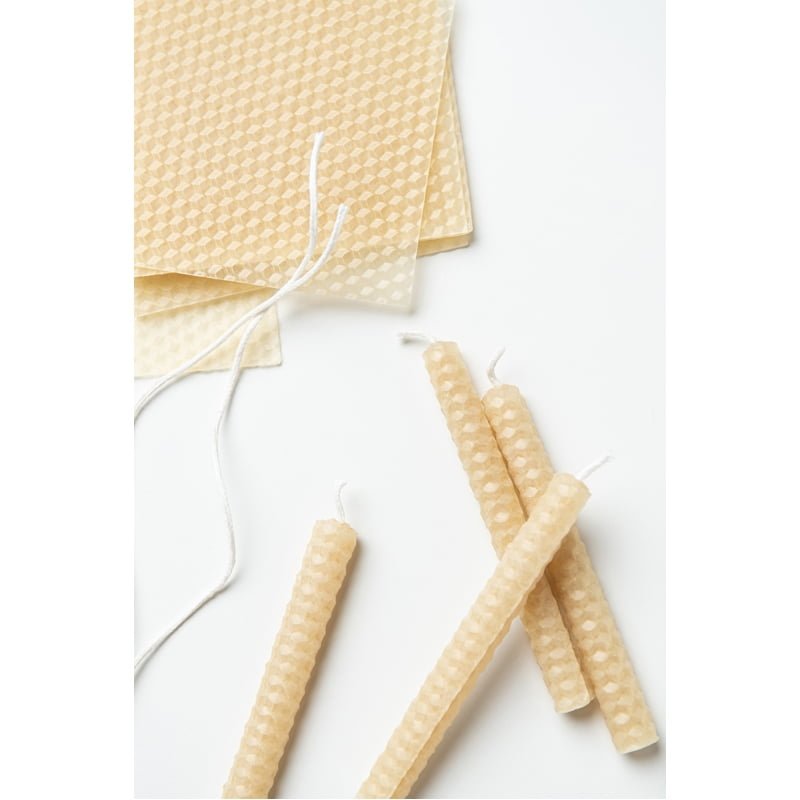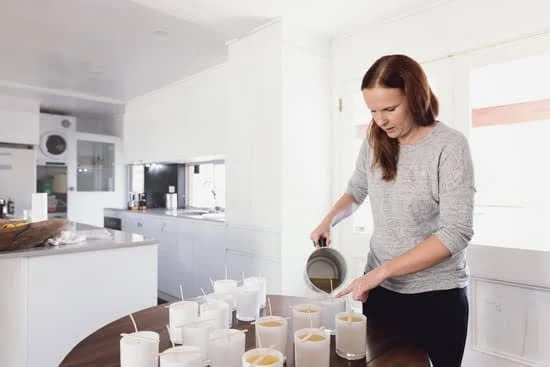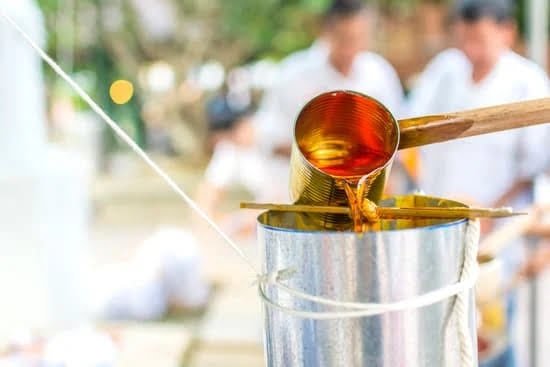Introduction
When scenting candles, there are two main categories of scents to consider: natural and synthetic. Natural scents are derived from plants and herbs and are more subtle than synthetic scents. Synthetic fragrances, on the other hand, are created in a laboratory and provide a wide range of variations for added complexity to your candle scents.
Natural Scents
Natural scents can be divided into essential oils, absolutes, and CO2 extracts. Essential oils are derived from plant materials such as flowers and leaves while absolutes involve harsher processes that use solvents to extract the aroma compounds from plants or seeds. CO2 extracts use supercritical-state carbon dioxide in place of a solvent to extract highly concentrated odor molecules with minimal degradation. These natural oils come in many forms such as lavender, orange blossom, jasmine, rosemary, and tea tree oil for example.
Synthetic Scents
Synthetic fragrance compounds are usually made up of hundreds of different aroma molecules combined together in a lab. This complexity allows you to create unique blends that don’t naturally exist with pure essential oils. Fragrance oils contain synthetic components which have the same aroma compounds found in nature but re-created through chemical synthesis instead of harvested directly from plants or herbs. Examples include synthetic versions of rose oil, apple blossom, wintergreen, and honeysuckle among many others.
Ultimately when it comes scenting candles, whether you choose natural or synthetic options all depends on your personal preference and desired outcome based on scent notes wanted in your creations!
Exploring Essential Oils
Essential oils are a popular choice for scenting candles. They come in a variety of scents ranging from herbal and floral to spicy and citrusy. They possess many benefits, such as aromatherapeutic qualities and stress relief, making them ideal for aroma therapeutic candles. Essential oils can be used alone or blended together to make unique and custom scents. To create your own candle scent, you’ll need high-quality essential oils and an understanding of their properties and benefits.
When choosing an essential oil for your candle scent, it’s important to know the various properties of different types of oil. Each type of oil has its own distinctive scent plus therapeutic qualities that can help calm the body and promote wellbeing like Lavender or energise like Lemon or Mandarin. You should also ensure that the quality is pure – look out for 100% pure essential oils when sourcing your supplies, otherwise you could end up with a candle that smells too synthetic or not quite as you expected!
When it comes to safety guidelines, essential oils should be used with caution as they can be very potent if used incorrectly. If using more than one essential oil in a blend, make sure the ratios are correct and it’s best to always patch test on skin before using a new blend diluted in carrier oil. Additionally, avoid eyes, open cuts or wounds at all times when using them. Finally, store away from children or heat sources such as radiators to keep them safe but still allow the smell to linger around your home!
Creating unique blends is what makes essential oil candles so great! Popular blends include combinations such as Orange & Clove; Lemongrass & Lavender; Sandalwood & Bergamot ” the list is endless with this one having something for everyone’s tastes! Experiment with various combinations by combining scents from different categories like sweet and woody or florals to find something special just for you! When blending multiple oils together remember not to overdo it – instead focus on adding just enough drops for each note of the aroma so that none overpower others in the blend creating balance in your own handmade scent !
Fragrance Oils Importance
Fragrance oils are a popular way to scent candles. They are used in a variety of candle-making projects, including wax melts, votives, and jar candles. There are several types of fragrance oils for candles that may be used in your homemade candle creations. It is important to understand the differences between fragrance oils, the safe methods for using them when creating your own candles, and key tips on how to make sure your candle scents last as long as possible.
The first type of fragrance oil commonly used when making candles is essential oils. While they may have other uses, they also offer an opportunity to give off stunning aromas with natural ingredients since essential oils are derived naturally from plants and flowers such as lavender or rosemary. Essential oils can be quite potent to use in combination with waxes and so keep in mind what measurement will work best with the oil you choose before you start working on your project.
Another type of fragrance oil used for candle making is vegetable-based fragrance oil ” these are made from artificial materials like preservatives, but still provide a milder aroma than essential oils and many believe them to actually be more fragrant than their natural counterpart! The main thing to remember when using vegetable based fragrance oil is that due to their synthetic nature they tend not to last nearly as long as essential oils so if longevity is a priority then this might not be the best option.
When working with any type of oils it’s important to read labels carefully and research your product thoroughly before embarking on your candle-making project ” as well as familiarity with your equipment required for mixing properly so that no harmful chemicals end up finding their way into your product! Lastly, both types of fragrances should be stored safely away from heat sources in order to maximize their life span and potency – direct sunlight and even areas near heating units can take its toll on those delicate aromas quickly
Pre-Scented Wax
Pre-scented wax is a great tool for those who want to make their own scented candles. Pre-scented wax comes in a variety of popular scents and can be used in combination with many other components like natural essential oils or fragrant herbs. It’s important to remember that pre-scented wax can also be combined with other ingredients so it’s best to properly mix the blend to get an even scent throughout. Another benefit of pre-scented wax is that it has already been through the benchmarking process, so you don’t have to worry about selecting and testing a scent concentration level. Popular pre-scented wax blends include favorites such as lavender, lemon grass, and peppermint ” making it easy to create delicious smelling candles without having to mix your own. Although mixing your own blends will allow you more creative license and access to more varied scents, pre-assembled blends are much simpler for those just starting out.
Unique Synthetic Scents
No matter what type of scent you are looking to achieve, there are a variety of synthetic fragrances available that can be used to scent candles. These unique synthetic scents can provide an uplifting and refreshing aroma for your home. When blending two or more scents, it is important to keep safety in mind by making sure the combined ratios of essential oils in the blend do not exceed 5%. Additionally, because too much fragrance oil can lead to ‘mushroom cloud’ candles, be aware that over-saturating the wax with fragrance oil can leave a residue on wall surfaces. As such, it is best to use less than 1.5 ounces of fragrance oil per pound of wax when scenting your candles. Moreover, wherever possible try to select skin-safe fragrances suitable for bath and body items should you plan on using your candle as a source of aromatherapy or even skin moisturizing massage oils. Lastly, keep your aromatherapy candles simple with just one or two fragrances as more than three combinations will result in confusion and distraction rather than relaxation!
Going the Extra Mile
Some candle makers go the extra mile and combine fresh scented objects with their candles and wax mixtures. These objects can range from dried herbs, essential oils, flowers, spices, dried fruits and more. The combination of these aromas brings an interesting twist to any candle because it will carry a fresh scent as well as the fragrance from the candles wax mixture. This layering of scent makes for a very unique and personal result. The more creative you are in pairing up your chosen ingredients-from selecting herbs like rosemary or lavender to combining sweet fruits such as figs or oranges-the more appealing your scented candle will be. Additionally, many craft breweries also offer special hops or specialty esters that have unique aromas which can be added to boost a particular scent profile that you may be looking for in a candle.
Crafting the Perfect Candle
One of the most important elements of any candle is its scent. There are several different things you can use to scent your candles, including essential oils and fragrance oils. Essential oils are derived from plants and can be used to add natural aromas to candles such as lavender, rosemary, and eucalyptus. Fragrance oils are synthetic compounds that provide a wide range of scents ranging from herbal to woodsy notes. The key to getting the most out of a scented candle is layering fragrances in the wax itself or combined with additional additives like vybar or beeswax pastilles. Additionally, burning herbs such as sage and Palo Santo will infuse your home with aromatics while burning your candles. Experimenting with various scent combinations will allow you to create unique candles with lasting aromas that bring life into any room.
Wrapping Up
There are many different materials that can be used to scent candles. Some of the most common options include essential oils, fragrance oils, natural fragrances (such as flowers and herbs), and scent-infused wax. Each of these has its own benefits and drawbacks when it comes to scenting a candle.
Essential oils tend to provide a more intense aroma than other options, but they can also be expensive to purchase in large amounts for candle manufacturing. Additionally, some essential oils may not smell as desirable when heated, so it’s important to know what type of oil you’re using beforehand. Fragrance oils are often less expensive than other scents, but tend to lose intensity when heated. Natural fragrances from flowers and herbs tend to offer the best aromas but need to be added carefully due to the possibility of discoloration or damage from heat or fire. Finally, scent-infused wax is an ideal option for those who want a certain aroma continuously throughout their candles instead of fluctuating throughout their use time since heat binds the scent into the wax itself.
When choosing which material is right for your candles, remember that each has unique advantages and drawbacks. Consider what you would like your candles to smell like and make sure you choose an appropriate material before starting any project!

Welcome to my candle making blog! In this blog, I will be sharing my tips and tricks for making candles. I will also be sharing some of my favorite recipes.





